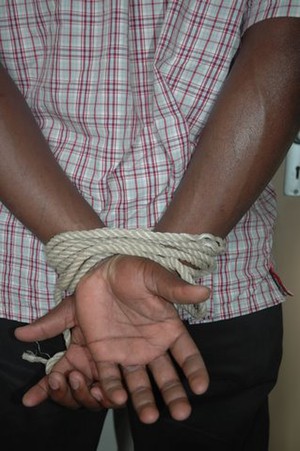East Africa: Human Trafficking Continues Unabated
By Eric Sande
 NAIROBI---A weeklong symposium on “the management of counter human trafficking projects in the perspective of human rights based approach (HBRA) in East Africa” took place in Nairobi from 8th to 12th November 2010. It was convened by associations of faith orientation, civil society organizations and community-based organisations working against human trafficking.
NAIROBI---A weeklong symposium on “the management of counter human trafficking projects in the perspective of human rights based approach (HBRA) in East Africa” took place in Nairobi from 8th to 12th November 2010. It was convened by associations of faith orientation, civil society organizations and community-based organisations working against human trafficking.
Key on the discussions was the East African laws related to counter trafficking in persons, child trafficking, prostitution and commercial sex work. The role that religion, corruption, culture, ICT and societal attitude play to either aggravate or ameliorate the current situation and the role that faith, government, NGOs, grassroots associations and individuals could play to combat human trafficking was also part of the give-and-takes.
In a press statement the groups emerged with satisfaction of the role played by the East African governments in addressing the problem of human trafficking. Tanzania and Uganda passed laws against trafficking in persons in 2008 while Kenya passed a law to this effect in October this year (2010).
The 2009 US Report on Trafficking in persons reported that Rwanda is also making a progress towards legislation. Laws play a positive framework in criminalizing human trafficking, and providing legal structures to assist trafficked victims. They do not only help in prevention but also in designing educational programmes for the society. It is however prudent to recognize that even the most ambitious laws and an effective system will require ample time, cooperation and resources (human and financial) in order to be effectively implemented.
It is noted with positive appreciation cross border and cross country collaborations amongst the East African authorities which have helped in easing the victims’ pain and in repatriation.
The panel recommended that this regional collaboration should be increased amongst our governments. Faith based organizations and civil associations should also promote collaboration at a regional level too. The East African media has really played a great role in highlighting this problem in our society. The media should continue doing more in educating the society about this malaise.
From the statement, it is said that the East African countries that had enacted the counter human trafficking laws for a year or more faced a number of challenges despite the fact that they had carried capacity building programmes to build the appropriate knowhow in addressing this problem at home. Unfortunately in these countries the civil society and faith organizations were not involved in the capacity building programmes. It is important that this anomaly is addressed in the future in all the countries of Eastern Africa. Media reports indicate poor inter-ministerial coordination and lack of understanding what constitutes human trafficking amongst public officials.
This lack of knowledge of the counter trafficking in persons (CTIP) laws amongst the public officials in essence means that they are unfamiliar of their responsibility in accordance with provisions of the law. Other reports indicate that the ministries involved in CTIP activities failed to communicate or collaborate with each other. This was aggravated by the fact that they did not have any budgetary allocations to combat the human trafficking crime. There are also issues of cross border trafficking of children, women, men and recent special cases of albinos who are trafficked for sexual exploitation, domestic work, labour and organs. All victims of trafficking are usually treated horribly and at the end being dismissed from their work places without being paid. All countries of East Africa do act as sources and destinations for victims from East Africa and other continents of the world. Horrible stories of pain and deaths undergone by the victims of trafficking in other continents have been severally related in the media calling the East African governments to action.
Despite the challenges however, governments have been able to conclude a few cases successfully and convict the culprits. These convictions however will scantily solve the problem which has some cultural acceptance and is seen as normal practice. Hence the call to go beyond the minimal requirements of the law in providing education. In East Africa there are beliefs in witch craft where parts of the human body are required for rituals, some section of the society such as the albinos are hence endangered. Hence the incidences of internal, in country trafficking are much more higher than those of international trafficking and are usually facilitated by family members, friends and relatives with offers of education or employment in urban areas.
The use of young girls with some of them being as young as seven years for forced domestic labour is quite rampant in our East African societies. It is normal to come across cases of children whose future have been blighted through suffering, abuse and exploitation at the hands of relatives and “well wishers” who are supposed to take care of them; but who have turned them to slaves.
The forum concluded by sending a message to the East Africa Community member states, inter- governmental organizations, NGOs, FBOs and grassroots organizations that they should raise awareness and sensitize the society in general about the violation of human rights that trafficked persons experience. They should also pay particular attention to the effect of their treatment by the governments. Their role should therefore be to serve, accompany and advocate for the victims.



